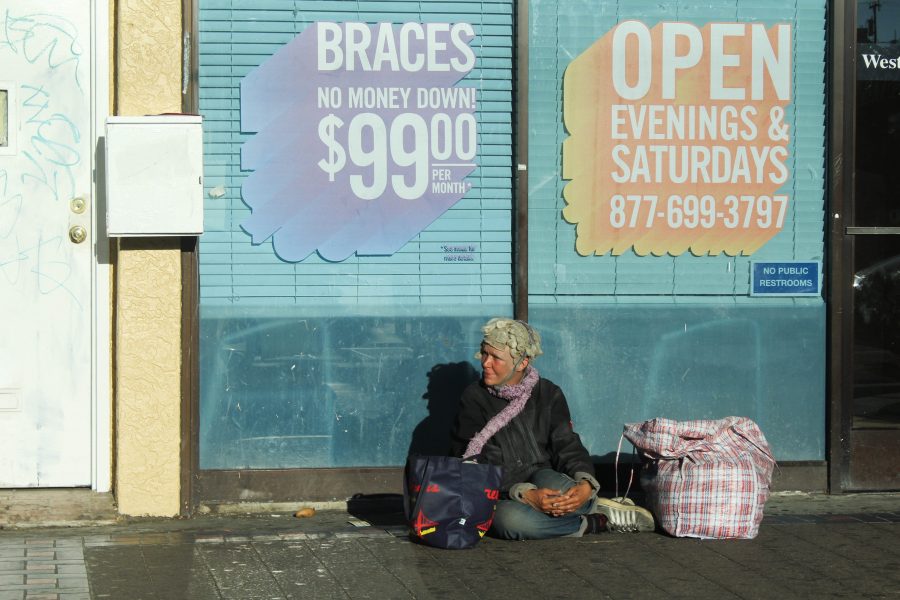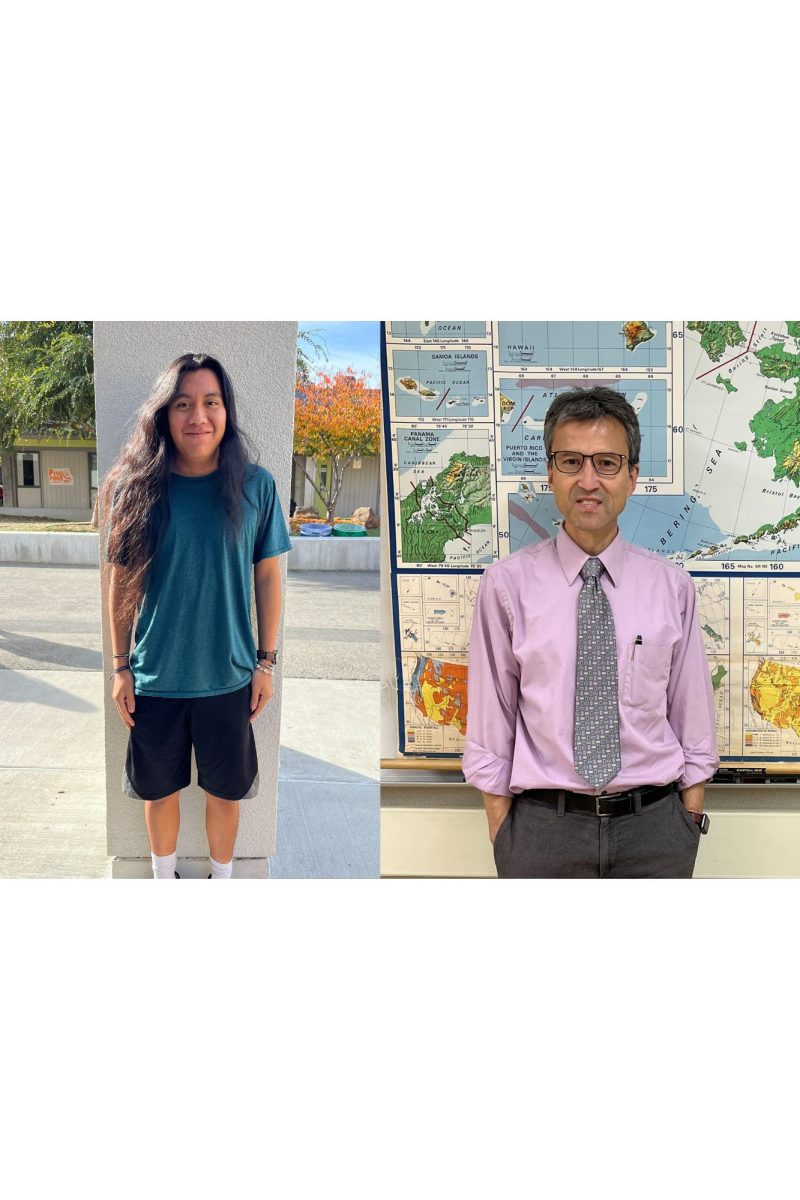Written by Helen Nguyen and Maya Rapoport, News Editor and Reporter
Despite a 14 percent reduction in homelessness in Santa Clara County from 2013 to 2015, homelessness still pervades many parts of the Bay Area. Many people are trying to combat the crisis by creating organizations, offering resources to the homeless, changing policies and providing affordable housing.
Every two years, a nationwide census of all homeless individuals is taken and there has been a small decline in homelessness over the last five years; however, in metropolitan areas, the problem has exacerbated. “On the West Coast there is a large increase, especially in cities like Seattle and [Los Angeles]. In [San Francisco] there was a four percent increase between 2013 and 2015,” Deputy Director on Homelessness and Supportive Housing in San Francisco Sam Dodge said. “We are doing a count in January but all signs point to an increase in population, particularly street homeless.”
Palo Alto Police Department (PAPD) Sergeant James Reifschneider, has not seen a significant increase or decrease in Palo Alto’s homeless population in his 12 years of service, but believes the ratio of homeless people to the overall population is slightly high. “Because our community and police department have taken [a] compassionate approach to homelessness, we probably attract a homeless population that may be disproportionate to our total population,” Reifschneider said. “[Palo Alto] is a safe community and [has] many resources to provide food and housing, and as a result we have a substantial homeless population.”
Issues with housing
East Palo Alto Mayor Donna Rutherford has been working with nonprofit organizations, faith-based communities and housing advocates to find housing strategies for homelessness in East Palo Alto. Rutherford has seen an increase in the number of homeless people, including families with children. She believes the main cause of homelessness in East Palo Alto is the lack of available jobs and affordable housing. “Many [people] are buying homes in East Palo Alto, [which is driving up] the cost of houses and forcing the renters to move out of East Palo Alto to other places with lower [rental prices],” Rutherford said. She believes East Palo Alto bears a disproportionate housing burden. “People are desperate for housing and it leads to many overcrowding and illegal dwelling units in East Palo Alto,” Rutherford said. People are then forced to move out of their homes because of unsafe living conditions. According to Rutherford, substance abuse and mental health can also contribute to homelessness.
Dodge, who is recognized as San Francisco’s homeless spokesperson, has been working on homelessness for 17 years. Dodge believes that the main causes of homelessness in San Francisco are the lack of affordable housing to the lower class, and the failure of federal government to provide rental subsidies. “People are complex. Homelessness is at the intersection of many scales of the institution in our society, whether it’s inadequate entitlement benefits, criminal justice system, the foster care system, substance abuse and mental health systems,” Dodge said. “There’s no one factor that is true for everyone except for inadequate income and lack of affordable housing, but everyone’s particular case often involves other kinds of failures of our society to take care of each other.”
Confronting with compassion
According to Reifschneider, since PAPD officers interact with the homeless on a daily basis, they know a large portion of the homeless population in Palo Alto on a personal basis. “Our community is small enough that our officers get a chance to get to know a large number of our homeless population by name and frequently because we see them around and they are citizens just like anyone else,” Reifschneider said. “We have a balancing act to do in law enforcement in that we want to be as compassionate as we can to those that are less fortunate, while at the same time being sensitive to some of the health and safety issues sometimes presented by homelessness.” Many of the interactions between the PAPD result from violent or unsafe behavior; however, police officers also interact with the homeless when conducting a welfare check, in which they help homeless people in distress, usually regarding medical problems, both mental and physical.
Palo Alto has numerous resources, including formal service providers and religious establishments, which provide food and housing to the homeless. “Our goal as a police department in general is to help people and if the best way we can help someone is try to put them in touch with resources and food then that’s a job well done,” Reifschneider said.
During the winter, the police department strives to help homeless people find shelter due to the harsher weather conditions. “Sleeping outside becomes dangerous during the winter because there is the potential for exposure and people getting sick or even dying out in the elements,” Reifschneider said. Although the PAPD does not have the direct ability to reduce homelessness, they are able to offer resources, such as shelter and food, to the homeless. “Having [resources] gives our officers the ability to steer people towards those resources in the hopes that they are able to take advantage of them,” Reifschneider said.
Change through policy
Rutherford is committed to preventing and decreasing homelessness in East Palo Alto. “I will [help] by influencing policy and working collaboratively with public, private and the nonprofit sector,” Rutherford said. In the winter, members of the community give homeless people food, jackets, and blankets to help them survive the cold weather. The East Palo Alto City Council adopted a 2nd Unit Ordinance in 2014 to increase housing opportunities.
Dodge has worked in the last year with a non-profit to help build the biggest stack of supportive housing in the city through a city program. “I helped prevent thousands of evictions; together with tenants we organized and changed laws,” Dodge said. Dodge also worked to bring down encampments and provide housing access to those who live on the streets. “I helped start a toilet access program called Pitstop that serves over 25,000 people a month and a navigation center which is a new approach towards shelter and housing for long term homeless individuals,” Dodge said. Dodge was able to end homelessness for over 700 street homeless people in San Francisco in a year and half, and the navigation centers are now expanding to seven sites. “Together under the mayor’s direction, we helped form a new department to centralize the city’s response to homelessness, now called the Department of Homelessness and Supportive Housing,” Dodge said. “It’s a $230 million a year department that shelters, houses and outreaches to homeless people.” To prepare for the winter and help homeless people survive the cold, the San Francisco Department has winter shelters set up. Churches, synagogues and other religious places also open their doors as shelter during the winter months.
Opportunities to volunteer
Sergeant Reifschneider believes that everyone can help, because of the various volunteering opportunities that are available throughout the Bay. Even though high school students may not be able to donate a lot of money, Reifschneider believes students can help by providing their energy and time. According to Reifschneider, there is also a negative stigma surrounding homeless; thus, he says, students should try to be more empathetic towards the homeless. “Many people that are homeless are not homeless by choice,” Reifschneider said. “If we start looking at it from that perspective and trying to imagine the things that they don’t have that we all take for granted, I think that that can help.” Dodge thinks everyone should be supportive and try to help homeless people. “Every homeless person is someone’s child, family member, former classmate and they might be at the most horrible moment in their lives.”
Rutherford believes education is essential for youth to have a better understanding of homelessness and its implications, as well. “Students need to understand [that there are] other issues that can lead to homelessness such as substance abuse, mental illness and physical health,” Rutherford said.
Student efforts
Senior Karla Henriquez was inspired to start a photography project raising awareness of homelessness in the Bay Area. Henriquez believes that our society has a preconceived idea that homeless are in the situation they are in due to bad decisions that resulted to that misfortune. She wanted to let people know that homeless are people too, and that society shouldn’t be afraid of or think less of them. Henriquez acknowledges that there are a lot of homeless individuals around the Bay Area–something most people are uncomfortable with. “There’s a major bias against homeless people, and I think it comes from the fear that people have of them,” she said. “We live in a very rich area and the thought of seeing a homeless individual for most people isn’t very ideal–they usually try to avoid those people as much as possible rather than confronting a problem that has been in our society for such a long time.”
A few years ago, Henriquez served as a librarian at the East Palo Alto library, and constantly saw underprivileged individuals present. “They would usually ask for help when using computers, so I would help as a tech person at times and they would usually try to work on projects such as resumes,” Henriquez said. “Just seeing them there and seeing the great amount of effort that they would put into trying to better themselves–literally by showing up to the public library and getting help on writing–made me realize that a lot of people are very condescending towards them.”
Detesting the treatment and prejudice against homeless, Henriquez decided that she would try to help them as much as possible by taking pictures of the destitute individuals. “Ever since then, it’s been an ongoing project that I’ve had in mind,” she said. Her goal for this project is to try and make people more aware of a problem that impacts all of society, and that any positive effort they put into helping can affect others greatly.
Henriquez has gone to SF before to help at a food shelter, and has also helped with donating cans and arranging them for those who are less privileged. She believes students can raise awareness and help homelessness in our area by simply looking for opportunities to help. “There will always be many ways to help,” Henriquez said. “Maybe the stigma that revolves around them will slowly start to drain out and people will be more willing to help.”












